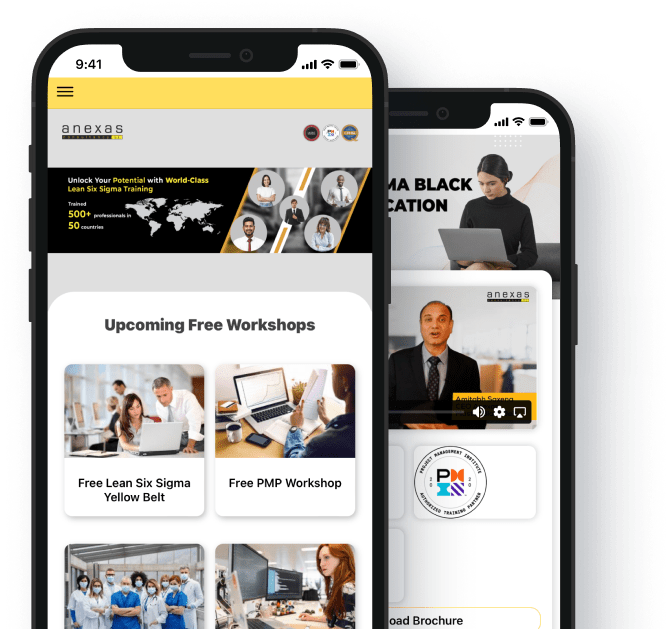Table of Contents
Share This Article
A Practical Guide to Kaizen Events: Accelerating Continuous Improvement Efforts
- 27916 views
Introduction to Kaizen Events
In today’s dynamic and competitive business landscape, organizations constantly seek ways to enhance efficiency, reduce waste, and improve quality. At the heart of this pursuit lies the philosophy of Kaizen, a Japanese term meaning “change for the better” or “continuous improvement.” In essence, Kaizen represents a culture of constant improvement, where every employee, regardless of their role, is encouraged to contribute ideas for enhancing processes and workflows. This section aims to provide a comprehensive introduction to Kaizen and its significance in organizational success.
Definition of Kaizen
Kaizen embodies a philosophy of gradual, incremental improvement that permeates all aspects of an organization, from the shop floor to the boardroom. It emphasizes the relentless pursuit of excellence through small, manageable changes implemented on a daily basis. These changes can range from simple process optimizations to more complex innovations, all aimed at driving efficiency, reducing costs, and enhancing customer satisfaction. Kaizen is not merely a set of tools or techniques but rather a mindset that fosters a culture of continuous learning and adaptation.
Importance of Continuous Improvement in Organizations
In today’s fast-paced and ever-changing business environment, the ability to adapt and improve is crucial for staying competitive. Continuous improvement enables organizations to identify and address inefficiencies, bottlenecks, and waste in their processes, leading to cost savings, increased productivity, and enhanced customer satisfaction. Moreover, by fostering a culture of continuous improvement, organizations can empower their employees, boost morale, and promote innovation. In essence, continuous improvement is not just a strategic imperative but a fundamental mindset that drives sustained success in the long run.
Purpose of Kaizen Events
While continuous improvement is an ongoing endeavor, Kaizen Events serve as focused, time-bound initiatives aimed at achieving specific improvement goals within a short timeframe. These events bring together cross-functional teams to analyze processes, identify opportunities for improvement, and implement solutions rapidly. By concentrating resources and efforts on targeted areas, Kaizen Events enable organizations to make significant strides in their continuous improvement journey and drive measurable results in a relatively short period.
Overview of the Guide
This guide is designed to provide a practical framework for planning, executing, and sustaining successful Kaizen Events within organizations. It will delve into the fundamental principles of Kaizen, provide guidance on preparing for and planning Kaizen Events, offer insights into overcoming common challenges, and showcase real-world examples of successful implementation. Whether you’re new to Kaizen or looking to refine your existing practices, this guide aims to equip you with the knowledge and tools needed to accelerate your organization’s continuous improvement efforts and achieve tangible results.

Understanding Kaizen Events
In order to fully grasp the essence of Kaizen and its application in organizational settings, it’s essential to explore its origins, principles, and underlying philosophy.
Origins and History of Kaizen
Kaizen traces its roots back to post-World War II Japan, where the country faced the monumental task of rebuilding its economy amidst widespread devastation. During this period of reconstruction, Japanese companies, particularly those in manufacturing, sought innovative ways to improve efficiency and productivity with limited resources. It was in this context that the concept of Kaizen emerged, initially as a means of survival and later evolving into a cornerstone of Japan’s economic success. Over the decades, Kaizen has transcended its cultural origins to become a globally recognized methodology for continuous improvement in various industries and sectors.
Principles of Kaizen
Central to the philosophy of Kaizen are several core principles that guide its implementation and execution. These principles serve as the foundation for fostering a culture of continuous improvement within organizations and include:
Continuous Improvement
At the heart of Kaizen lies the principle of continuous improvement, which advocates for the ongoing pursuit of incremental enhancements in all aspects of operations. Rather than seeking dramatic, revolutionary changes, Kaizen emphasizes the importance of small, incremental improvements implemented consistently over time. This iterative approach allows organizations to adapt to changing circumstances, address emerging challenges, and seize new opportunities for optimization and innovation.
Respect for People
Another fundamental principle of Kaizen is the emphasis on respect for people. This principle recognizes that employees are the driving force behind organizational success and places importance on empowering them to contribute their ideas, insights, and expertise to the improvement process. By fostering an environment of trust, collaboration, and mutual respect, organizations can harness the full potential of their workforce and cultivate a culture of engagement and ownership.
Elimination of Waste
Kaizen places a strong emphasis on the identification and elimination of waste in all its forms. Whether it’s excess inventory, inefficient processes, or unnecessary movement, waste represents resources that are not adding value to the end product or service. By systematically identifying and eliminating waste, organizations can streamline their operations, reduce costs, and improve overall efficiency. This principle aligns closely with the concept of Lean manufacturing, which emphasizes the minimization of waste to maximize value for customers.
Kaizen Culture and Mindset
Building a Kaizen culture and fostering the right mindset within an organization is crucial for the successful implementation of continuous improvement initiatives. It goes beyond simply adopting Kaizen practices; it involves creating an environment where the principles of Kaizen are ingrained in the organization’s DNA and embraced by every member of the workforce.
Embracing a Kaizen culture starts with leadership commitment and active participation. Leaders must champion the principles of continuous improvement, demonstrating their dedication to the process and setting the tone for the entire organization. This involves not only providing resources and support for Kaizen initiatives but also leading by example, actively engaging in improvement activities, and soliciting input from employees at all levels.
Central to the Kaizen culture is the concept of empowerment and employee involvement. Employees should be encouraged to take ownership of the improvement process, empowered to identify opportunities for enhancement, and given the autonomy to implement solutions. This not only leads to more innovative and sustainable improvements but also fosters a sense of ownership, pride, and engagement among employees.
Communication and collaboration are also integral components of a Kaizen culture. Open lines of communication ensure that ideas and feedback flow freely throughout the organization, facilitating the exchange of knowledge and insights that drive continuous improvement. Collaboration, both within teams and across departments, enables the sharing of best practices, the pooling of resources, and the collective effort needed to tackle complex challenges.
Furthermore, a Kaizen culture prioritizes learning and adaptation. It recognizes that continuous improvement is an ongoing journey, not a destination, and encourages organizations to embrace experimentation, learn from failures, and adapt to changing circumstances. This requires a willingness to challenge the status quo, embrace new ideas, and continuously seek ways to evolve and innovate.
Preparing for a Kaizen Event
Preparation is key to the success of any Kaizen Event, laying the groundwork for effective execution and tangible results. This section explores the essential steps involved in preparing for a Kaizen Event, from defining objectives to ensuring the team is equipped with the necessary skills and knowledge.
Identifying Objectives and Goals
The first step in preparing for a Kaizen Event is to clearly define its objectives and goals. This involves identifying the specific processes or areas that will be targeted for improvement and establishing measurable outcomes that align with organizational priorities. Whether the goal is to reduce cycle time, improve quality, or streamline workflows, having clear objectives ensures that the team remains focused and aligned throughout the event.

Selecting the Right Team
Selecting the right team is crucial for the success of a Kaizen Event. Ideally, the team should be cross-functional, representing different departments or areas that will be impacted by the proposed improvements. This diversity ensures a comprehensive perspective and promotes buy-in from all stakeholders. Additionally, team members should possess a mix of skills, including problem-solving, analytical, and communication skills, to effectively collaborate and drive the improvement process forward.
Training and Education
Prior to the Kaizen Event, it’s essential to provide team members with the necessary training and education to ensure they are equipped to participate effectively. This may include training on Kaizen principles and methodologies, as well as specific tools and techniques that will be utilized during the event, such as value stream mapping or root cause analysis. By investing in training and education, organizations can empower team members to contribute meaningfully to the improvement process and maximize the impact of the Kaizen Event.
Setting Clear Expectations
Setting clear expectations is vital for ensuring alignment and accountability throughout the Kaizen Event. This involves clearly communicating the roles and responsibilities of team members, as well as the expected outcomes and timeline for the event. Additionally, it’s important to establish guidelines for decision-making and problem-solving, ensuring that the team remains focused on achieving the defined objectives. By setting clear expectations upfront, organizations can mitigate misunderstandings and foster a collaborative environment conducive to successful improvement efforts.
Planning the Kaizen Event
Effective planning is essential to ensure the success and efficiency of a Kaizen Event. This section delves into the key components of planning, from defining the scope to establishing metrics for success, to ensure that the event achieves its objectives and delivers measurable results.
Defining Scope and Boundaries
The first step in planning a Kaizen Event is to clearly define its scope and boundaries. This involves identifying the specific processes, workflows, or areas within the organization that will be targeted for improvement. By clearly defining the scope, teams can focus their efforts and resources on areas where they can have the greatest impact. Additionally, establishing boundaries helps prevent scope creep and ensures that the event remains manageable within the designated timeframe and resources.
Creating a Detailed Schedule
Creating a detailed schedule is essential for effectively managing time and resources during a Kaizen Event. This involves breaking down the event into specific tasks and activities, assigning responsibilities, and establishing deadlines for completion. A well-defined schedule helps keep the team on track and ensures that progress is made according to plan. Additionally, it provides a roadmap for coordinating activities and maximizing efficiency throughout the event.
Gathering Necessary Resources
Gathering the necessary resources is another critical aspect of planning a Kaizen Event. This includes identifying and securing the tools, materials, and support needed to facilitate the improvement process. Resources may include data and information on current processes, access to relevant technology or equipment, and support from key stakeholders or subject matter experts. By ensuring that the team has the resources they need, organizations can minimize disruptions and optimize the effectiveness of the event.
Establishing Metrics for Success
Establishing metrics for success is essential for measuring the impact and effectiveness of a Kaizen Event. This involves identifying key performance indicators (KPIs) that align with the objectives of the event and establishing baseline measurements to track progress. Whether the goal is to improve cycle time, reduce defects, or increase productivity, having clear metrics allows teams to monitor their progress and make data-driven decisions throughout the event. Additionally, it provides a basis for evaluating the success of the event and identifying areas for further improvement.
Execution of the Kaizen Event
The execution phase of a Kaizen Event is where the planned improvements come to fruition through a structured process of analysis, ideation, and implementation. This section explores the key steps involved in executing a Kaizen Event, from orientation to monitoring and adjusting.
Introduction and Orientation
The execution phase typically begins with an introduction and orientation session, where the team comes together to align on the objectives, goals, and expectations for the event. This session serves to ensure that all team members are on the same page and understand their roles and responsibilities. Additionally, it provides an opportunity to review the agenda, schedule, and ground rules for the event, setting the stage for a productive and collaborative working environment.
Current State Analysis
Following the orientation, the team conducts a thorough analysis of the current state of the processes or workflows targeted for improvement. This involves gathering data, observing operations, and documenting existing practices to gain a clear understanding of how things currently operate. By conducting a comprehensive current state analysis, the team can identify inefficiencies, bottlenecks, and areas for improvement, laying the foundation for future optimization efforts.

Root Cause Analysis
With a clear understanding of the current state, the next step is to conduct a root cause analysis to identify the underlying factors contributing to the identified issues or challenges. This involves asking “why” repeatedly to uncover the deeper causes behind surface-level problems. By addressing root causes rather than symptoms, the team can develop more effective and sustainable solutions that address the underlying issues and prevent recurrence.
Generating Improvement Ideas
Once the root causes have been identified, the team engages in a collaborative ideation process to generate potential improvement ideas. This involves brainstorming creative solutions, exploring different perspectives, and leveraging the collective expertise of team members. By encouraging open communication and creativity, organizations can generate a diverse range of improvement ideas that address the identified challenges and opportunities.
Implementation of Solutions
With a set of improvement ideas in hand, the team moves forward with implementing selected solutions. This may involve piloting new processes, testing proposed changes, and making adjustments based on feedback and observations. By taking a systematic and iterative approach to implementation, organizations can minimize risks and optimize the effectiveness of their improvement efforts.
Monitoring and Adjusting
Throughout the execution phase, it’s essential to monitor progress and make adjustments as needed. This involves tracking key performance indicators, assessing the impact of implemented solutions, and identifying any unforeseen challenges or obstacles. By continuously monitoring and adjusting their approach, organizations can ensure that their improvement efforts remain on track and deliver the desired outcomes.
Post-Event Activities
The conclusion of a Kaizen Event marks the beginning of a crucial phase in the continuous improvement journey. Post-event activities are essential for evaluating the effectiveness of the event, documenting lessons learned, celebrating successes, and ensuring that improvements are sustained over the long term.
Evaluation of Results
The first step in the post-event phase is to conduct a thorough evaluation of the results achieved during the Kaizen Event. This involves comparing the outcomes against the objectives and goals established at the outset of the event, analyzing key performance metrics, and assessing the overall impact on the targeted processes or workflows. By objectively evaluating the results, organizations can determine the success of the event and identify areas for further improvement or refinement.
Documentation and Knowledge Sharing
Documenting the outcomes, insights, and lessons learned from the Kaizen Event is essential for capturing valuable knowledge and facilitating future improvement efforts. This includes documenting the improvement ideas generated, detailing the solutions implemented, and recording any challenges encountered and their resolutions. Additionally, organizations should establish mechanisms for sharing this knowledge across the organization, whether through formal documentation, presentations, or training sessions. By sharing insights and best practices, organizations can leverage the collective wisdom of their teams and accelerate the pace of continuous improvement.
Celebrating Successes and Recognizing Team Efforts
Celebrating successes and recognizing the efforts of team members is vital for maintaining morale, motivation, and engagement. This may involve acknowledging individual contributions, highlighting team achievements, and publicly recognizing the impact of the improvement efforts. By celebrating successes, organizations demonstrate their commitment to fostering a culture of appreciation and recognition, which, in turn, encourages continued participation and investment in future improvement initiatives.
Follow-Up and Sustaining Improvements
Finally, follow-up and sustaining improvements are crucial for ensuring that the gains achieved during the Kaizen Event are sustained over the long term. This involves monitoring performance metrics, tracking the implementation of solutions, and addressing any issues or challenges that may arise post-event. Additionally, organizations should establish processes for ongoing review and refinement of the implemented improvements, as well as mechanisms for addressing new opportunities for optimization as they arise. By prioritizing follow-up and sustainability efforts, organizations can ensure that the benefits of the Kaizen Event are lasting and contribute to ongoing organizational success.

Common Challenges and Solutions
Implementing Kaizen Events can be a transformative process for organizations, but it’s not without its challenges. This section explores some of the common obstacles encountered during the journey towards continuous improvement and offers practical solutions for overcoming them.
Resistance to Change
Resistance to change is perhaps one of the most prevalent challenges organizations face when implementing Kaizen Events. Employees may be apprehensive about adopting new processes or methodologies, fearing disruption to their routines or job security. To address this challenge, organizations must prioritize effective communication and change management strategies. This involves clearly articulating the rationale behind the proposed changes, addressing concerns and misconceptions, and involving employees in the decision-making process. Additionally, providing opportunities for training and education can help build confidence and competence among employees, empowering them to embrace change and contribute to the success of the Kaizen initiatives.
Lack of Leadership Support
Another common challenge is the lack of leadership support, which can hinder the success of Kaizen Events. Without strong leadership buy-in and commitment, initiatives may struggle to gain traction or secure the necessary resources and support. To overcome this challenge, organizations must actively engage leaders at all levels and demonstrate the value and importance of continuous improvement. This may involve aligning improvement efforts with organizational goals and priorities, showcasing successful case studies and examples, and providing leadership training and education on Kaizen principles and methodologies. By fostering a culture of leadership support and involvement, organizations can create an environment where Kaizen initiatives thrive and drive meaningful change.
Resource Constraints
Resource constraints, whether in terms of time, budget, or manpower, can pose significant challenges to the implementation of Kaizen Events. Limited resources may restrict the scope or scale of improvement initiatives and hinder their effectiveness. To address this challenge, organizations must prioritize resource allocation based on the potential impact and return on investment of improvement efforts. This may involve reallocating existing resources, leveraging technology and automation to streamline processes, or seeking external support and partnerships. Additionally, organizations can encourage creativity and innovation among team members, empowering them to identify resource-efficient solutions and workarounds to overcome constraints.
Overcoming Plateaus in Improvement
Finally, organizations may encounter plateaus in improvement, where progress stalls or levels off despite initial gains. This can be frustrating and demotivating for teams, potentially leading to complacency or disengagement. To overcome plateaus in improvement, organizations must adopt a proactive approach to continuous improvement, continually seeking new opportunities for optimization and innovation. This may involve revisiting established processes and workflows, soliciting feedback from stakeholders, and encouraging experimentation and risk-taking. Additionally, organizations can leverage techniques such as benchmarking and peer learning to identify best practices and learn from the successes of others. By embracing a mindset of continuous learning and adaptation, organizations can break through plateaus and sustain momentum in their improvement efforts.
Case Studies and Examples
Examining real-world case studies and examples of successful Kaizen Events provides invaluable insights into the practical application of continuous improvement methodologies and the tangible benefits they can deliver to organizations. This section highlights some notable examples and draws lessons learned and best practices from these experiences.
Real-world Examples of Successful Kaizen Events
Numerous organizations across various industries have successfully implemented Kaizen Events to drive significant improvements in their operations. For instance, Toyota, often cited as a pioneer in the adoption of Kaizen principles, has implemented countless Kaizen Events to optimize manufacturing processes, reduce waste, and enhance product quality. One notable example is the “Toyota Production System,” which emphasizes continuous improvement and employee involvement in problem-solving. Similarly, companies like Boeing, General Electric, and Amazon have also leveraged Kaizen Events to streamline processes, improve efficiency, and drive innovation in their respective industries. These real-world examples demonstrate the transformative impact of Kaizen Events when implemented effectively and underscore the importance of fostering a culture of continuous improvement within organizations.
Lessons Learned and Best Practices
From these real-world examples emerge several key lessons learned and best practices for successful Kaizen Event implementation. First and foremost is the importance of leadership commitment and involvement. Strong leadership support sets the tone for the entire organization and signals the importance of continuous improvement initiatives. Additionally, effective communication and collaboration are essential for engaging employees and fostering a sense of ownership and accountability for improvement efforts. Providing adequate training and resources ensures that teams are equipped with the necessary skills and tools to drive meaningful change. Moreover, organizations should prioritize a data-driven approach to decision-making, leveraging performance metrics and analytics to assess progress and inform future improvement initiatives. Lastly, celebrating successes and recognizing team efforts fosters morale and motivation, reinforcing the value of continuous improvement and sustaining momentum over the long term. By adhering to these lessons learned and best practices, organizations can maximize the success of their Kaizen Events and drive sustainable improvements in their operations.
Advanced Techniques and Strategies
As organizations seek to further enhance their continuous improvement efforts, they often turn to advanced techniques and strategies that build upon the foundational principles of Kaizen. This section explores several advanced techniques and strategies, including Lean Six Sigma integration, value stream mapping, Gemba walks, and the distinction between Kaizen Blitz and Kaizen Events.
Lean Six Sigma Integration
Integrating Lean Six Sigma methodologies with Kaizen principles offers a powerful approach to continuous improvement that combines the focus on waste reduction and efficiency of Lean with the data-driven problem-solving and process improvement tools of Six Sigma. Lean Six Sigma emphasizes the identification and elimination of variation and waste in processes, resulting in improved quality, reduced cycle times, and increased customer satisfaction. By integrating Lean Six Sigma into Kaizen Events, organizations can leverage a comprehensive toolkit to address complex challenges and achieve breakthrough improvements.
Value Stream Mapping
Value stream mapping is a powerful tool used to visualize and analyze the flow of materials and information through a process from end to end. By mapping out the current state and future state of a process, organizations can identify inefficiencies, bottlenecks, and areas for improvement. Value stream mapping enables teams to gain a holistic understanding of the entire process, from customer demand to product delivery, and uncover opportunities for streamlining workflows, reducing lead times, and enhancing overall efficiency. Integrating value stream mapping into Kaizen Events provides teams with a structured approach to process analysis and improvement, guiding their efforts towards achieving tangible results.
Gemba Walks
Gemba walks involve going to the “Gemba,” or the actual place where work is done, to observe operations firsthand, engage with employees, and identify opportunities for improvement. Gemba walks enable leaders and teams to gain valuable insights into daily operations, understand the challenges faced by frontline workers, and identify opportunities for optimization. By fostering direct observation and dialogue, Gemba walks promote a culture of transparency, collaboration, and continuous improvement throughout the organization. Integrating Gemba walks into Kaizen Events allows teams to gather real-time data, validate improvement ideas, and ensure that solutions are grounded in the realities of the workplace.
Kaizen Blitz vs. Kaizen Events
While both Kaizen Blitz and Kaizen Events are aimed at driving continuous improvement, they differ in scope, duration, and intensity. Kaizen Blitz, also known as rapid improvement events, are short-duration initiatives focused on addressing specific problems or opportunities within a compressed timeframe, typically ranging from a few days to a week. Kaizen Events, on the other hand, are more comprehensive and longer-term initiatives that involve cross-functional teams and address broader process improvements over a period of weeks or months. While Kaizen Blitz offers quick wins and immediate results, Kaizen Events provide a structured framework for sustained improvement and organizational transformation. Understanding the differences between Kaizen Blitz and Kaizen Events allows organizations to choose the most appropriate approach based on the complexity and urgency of the improvement opportunity.

Continuous Improvement Beyond Kaizen Events
While Kaizen Events are instrumental in driving focused improvement initiatives, true organizational excellence requires a commitment to continuous improvement that extends beyond individual events. This section explores strategies for integrating Kaizen into daily operations, building a sustainable culture of continuous improvement, and leveraging technology to enhance improvement efforts.
Integrating Kaizen into Daily Operations
Integrating Kaizen principles into daily operations involves embedding a mindset of continuous improvement into the organizational culture and day-to-day activities of employees at all levels. This requires creating systems and processes that encourage and enable employees to identify opportunities for improvement, experiment with new ideas, and implement changes on an ongoing basis. By institutionalizing Kaizen into the fabric of the organization, companies can create a dynamic environment where improvement becomes a natural and ingrained part of the work routine, rather than an isolated event.
Building a Sustainable Culture of Continuous Improvement
Building a sustainable culture of continuous improvement requires a concerted effort to foster an environment where innovation, experimentation, and learning are encouraged and celebrated. This involves leadership commitment to championing continuous improvement initiatives, providing resources and support for improvement efforts, and actively involving employees in the improvement process. Additionally, organizations should prioritize communication, recognition, and knowledge sharing to reinforce the value of continuous improvement and motivate employees to participate and contribute. By nurturing a culture of continuous improvement, organizations can adapt to changing market conditions, drive innovation, and maintain a competitive edge in today’s dynamic business landscape.
Leveraging Technology for Improvement Efforts
In today’s digital age, organizations have access to a myriad of technological tools and solutions that can enhance their continuous improvement efforts. From process automation and data analytics to collaborative platforms and communication tools, technology offers a wealth of opportunities to streamline processes, gain insights, and facilitate collaboration across teams. By leveraging technology effectively, organizations can accelerate the pace of improvement, increase efficiency, and drive innovation. Moreover, technology can enable remote collaboration and flexibility, allowing teams to collaborate and share knowledge regardless of geographical location. By embracing technology as an enabler of continuous improvement, organizations can harness its full potential to achieve excellence in their operations.
Conclusion
In conclusion, the journey towards organizational excellence through continuous improvement is multifaceted and dynamic, requiring dedication, commitment, and a strategic approach. Throughout this guide, we have explored the principles, techniques, and strategies of Kaizen Events, as well as advanced methods and the importance of sustaining improvement efforts beyond individual events. From understanding the origins of Kaizen to navigating common challenges, from executing improvement initiatives to fostering a culture of continuous improvement, organizations have the opportunity to drive transformative change and achieve operational excellence. By embracing Kaizen principles, integrating advanced techniques, and leveraging technology, organizations can not only optimize processes, reduce waste, and enhance quality but also foster a culture of innovation, collaboration, and adaptability. Continuous improvement is not just a goal to be achieved but a journey to be embraced, a mindset to be cultivated, and a commitment to excellence that propels organizations towards sustained success in an ever-changing business landscape. As organizations embark on their continuous improvement journey, may they draw inspiration from the principles and practices outlined in this guide to unlock their full potential and thrive in today’s competitive environment.
FAQ
What is continuous improvement?
Continuous improvement is an ongoing process of making incremental enhancements to processes, products, or services to drive efficiency, reduce waste, and enhance quality over time. It involves systematically identifying opportunities for improvement, implementing changes, and monitoring outcomes to achieve organizational goals.
What is Kaizen?
Kaizen is a Japanese term that translates to “change for the better” or “continuous improvement.” It embodies a philosophy of continuous, incremental improvement in all aspects of an organization, involving every employee from the shop floor to the boardroom in the pursuit of excellence.
What are the benefits of implementing Kaizen?
Implementing Kaizen can lead to numerous benefits, including increased efficiency, reduced costs, improved quality, enhanced employee morale and engagement, streamlined processes, and greater customer satisfaction. By fostering a culture of continuous improvement, organizations can adapt to change more effectively and sustain success in the long term.
How do you get started with Kaizen?
Getting started with Kaizen involves several steps, including leadership commitment, employee involvement, training and education, and establishing a structured approach to improvement initiatives. It’s essential to identify specific goals and objectives, engage cross-functional teams, and create a supportive environment that encourages experimentation and learning.
What are some common challenges in implementing Kaizen?
Common challenges in implementing Kaizen include resistance to change, lack of leadership support, resource constraints, and overcoming plateaus in improvement. Addressing these challenges requires effective communication, leadership engagement, allocation of resources, and a proactive approach to problem-solving.
How do you measure the success of Kaizen initiatives?
The success of Kaizen initiatives can be measured using various performance metrics and key performance indicators (KPIs) aligned with the objectives of the improvement efforts. These may include metrics such as cycle time, defect rates, customer satisfaction scores, productivity levels, and cost savings.
What is the difference between Kaizen Events and Kaizen Blitz?
Kaizen Events and Kaizen Blitz are both focused improvement initiatives that aim to achieve specific objectives within a defined timeframe. However, Kaizen Events are typically longer-term initiatives involving cross-functional teams and addressing broader process improvements, while Kaizen Blitz, or rapid improvement events, are shorter-duration initiatives focused on addressing specific problems or opportunities within a compressed timeframe.
How do you sustain improvements achieved through Kaizen?
Sustaining improvements achieved through Kaizen involves creating systems and processes that institutionalize continuous improvement into the organizational culture and daily operations. This includes ongoing monitoring and measurement of performance, regular review and refinement of processes, and fostering a culture of accountability and innovation.
What role does leadership play in Kaizen?
Leadership plays a critical role in championing and supporting Kaizen initiatives. Strong leadership commitment sets the tone for the organization, provides direction and resources for improvement efforts, and fosters a culture of continuous improvement. Leaders also serve as role models, demonstrating the behaviors and attitudes that promote innovation, collaboration, and learning.
How can technology support Kaizen initiatives?
Technology can support Kaizen initiatives by providing tools and platforms for data analysis, process automation, collaboration, and communication. For example, software applications for data analytics can help identify improvement opportunities, while collaborative platforms facilitate communication and knowledge sharing among team members. Additionally, automation tools streamline processes, reduce manual effort, and improve efficiency, enabling organizations to drive continuous improvement more effectively.






